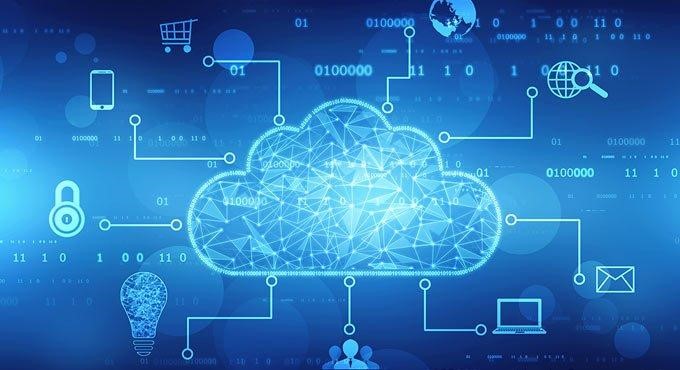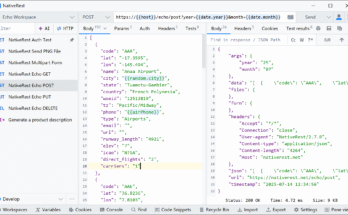In 2021 Technology is receiving unencumbered traction which is transforming our personal and professional life with each passing day. Both the new and old business industries are moulding themselves to adapt to these web development companies in India.
Cloud computing uses a network of servers connected by specialized links to spread data-processing jobs among them. A vast number of systems are linked together in the common or shared infrastructure. The use of virtualization methods enhances the power of cloud computing. The cloud is accessed by end-users via networked client devices. For the majority of their applications, many of these cloud customers use centralized servers. However, some cloud apps support applications that are exclusively available to specific customers. Cloud computing makes use of a network and a collection of centralized servers to keep data and applications up to date. For instance, even in the pre-pandemic state companies like Amazon are now offering cash services, credit cards and other essential financial products, including Amazon Pay. On the other side of the globe, wholesale giant Alibaba, with its spin-off Alipay, which has over nine hundred million customers, far more than the largest US bank, is diversifying. Both Alibaba and Amazon have been improving their ability to offer business on their platforms. End-users may use these applications without installing software and can access their data from any location thanks to the technology.
Below are the most used cloud storage services.
Google Drive is by far the most popular cloud storage service in the world, with an use rate of 94.44 percent. With a still amazing 66.2 percent, Dropbox, the finest cloud storage for collaboration, comes in second, followed by OneDrive (39.35 percent) and iCloud (38.89 percent). MEGA (5.09%), Box (4.17%), and pCloud (1.39%), all of which topped our list of the best cloud storage providers, are also popular.
IT departments devote a significant amount of effort on application implementation, maintenance, and upgrades. CIOs prefer cloud computing technology because it allows them to spend less time on application support and more time on key business tasks. Cloud computing reduces the expenses and hassles connected with servers, networks, applications, updates, and maintenance for the IT department.
Background of Cloud Computing
The number of Internet-connected devices has increased from 1000 in 1984 to 16000 million now (projected for 2019). Amazon, Microsoft, Google, EMC, VMware, IBM, Sun, Dell, Akamai, SalesForce.com, Net-Suite, and Activision are among the main IT service providers and consulting selected firms that have adopted and promoted cloud computing.
Cloud computing is a concept for providing seamless, easy, and on-demand access to a shared pool of resources such as servers, networks, processors, storage, applications, and services that can be readily built and delivered with little effort. Essential properties, service models, and deployment models make up the cloud computing model.
Characteristics of Cloud Computing
- On-demand self-service – The customer or user may supply computer resources such as network, storage, processors, and servers according to their needs without requiring too much human interaction.
- Network access – Consumers can access the resources across the network using thin or thick clients such as PCs, laptops, tablets, and mobile phones.
- Pooling of resources – The service provider’s resources are pooled to serve a large number of customers at the same time utilising a time-sharing model, with physical and virtual resources distributed dynamically in response to changing consumer demand. The whole method is location agnostic, as the client is unconcerned with or influenced by the physical location of the resources he is using.
- Rapid elasticity – The resources that a consumer has access to can be provided and released dynamically. The resources are usually scaled in accordance with the demand for these resources. This dynamic allocation provides the appearance that the resources are infinitely available to the customer.
- Measured service – Cloud computing assures that a metering capability is used to analyse the consumer’s resource use so that he may be invoiced for his resources based on the amount of usage.
Services Models of Cloud Computing
Software as a Service (SaaS) – enables users to access programmes that are hosted on a cloud architecture. The consumer uses a thin client interface, such as a web browser or an application programme interface, to access programmes on client devices. The underlying infrastructure, such as hardware, network, servers, operating systems, storage, and memory, is outside the consumer’s control. In some circumstances, the consumer may have special access to application-level configuration parameters. The service provider provides the consumer with ready-to-use apps that may be accessed as on-demand services through client devices. Salesforce, DocLanding, Zoho, and Workday are examples of SaaS, which are used for a variety of reasons such as human resource administration, billing, and email.
Platform as a Service (PaaS) – The customer can use the given cloud infrastructure to deploy self-created or purchased apps. The consumer does not have control over the underlying infrastructure, but he or she may manage the hosted apps and configurations. The services that an application can seek from the operating system may be limited by PaaS. Google App Engine and LoadStorm are two instances of PaaS, which are used for delivering and testing web-based applications.
Infrastructure as a Service (IaaS) – The customer has access to shared resources such as memory, processing, storage, and networks where they may deploy and operate software, such as operating systems and applications. Operating systems, storage, apps, and various network components are all within the control of the consumer. Infrastructure, such as memory, CPU, and storage, is provided by the service provider. The customer can install and run operating systems and software on his or her own computer. Amazon S3 and FlexiScale are two instances of IaaS, which are used for storing and managing virtual servers.
Deployment Models:
Private cloud – Cloud infrastructure is built specifically for an organization’s exclusive usage, which may include numerous business divisions. The organisation, a third party, or a combination of these may own and support the Cloud Infrastructure. The infrastructure might be located on the grounds of the company or in a remote location.
Community cloud – The infrastructure is built for the exclusive use of a set of customers from businesses with similar characteristics and needs. One or more of the participants, a third party, or a combination of these may own and support it. The infrastructure might be located on any of the organisations’ premises or at a distant location.
Public cloud – Anyone can utilise the infrastructure because it was built for that purpose. It might be owned and sponsored by a corporation, a university, or a government agency, or a mix of these. The infrastructure is housed on the provider’s premises.
Hybrid cloud – The architecture consists of two or more cloud infrastructures that remain independent clouds but are seamlessly connected to provide data and application portability between the clouds.
Cloud Manufacturing
IT and related smart technologies are enabling a substantial revolution in the manufacturing business. The basic goal of cloud computing is to deliver on-demand computing services in a distributed environment with high dependability, scalability, and availability. As a consequence of the confluence of numerous computing concepts such as Internet delivery, “pay-as-you-go/use” utility computing, virtualization, distributed and grid computing, cloud computing is considered a multidisciplinary area. Cloud computing is a commercial and IT infrastructure paradigm change in which computer power, data storage, and services are outsourced to third parties and sold as commodities. Cloud services centred on BPM applications have been adopted by the industrial industry. By shifting conventional operations to the cloud for enhanced operational efficiency, cloud computing may provide better and more effective solutions. This is in line with the DAMA (Design anywhere, Manufacture anywhere) strategy, which spreads the capacity to share design and production data across different locations. Cloud computing is quickly becoming a significant enabler for the manufacturing industry, allowing it to build sophisticated industrial networks that foster productive cooperation. Users might make requests for services such as product design, manufacture, and testing. It’s a step-in transitioning from production-oriented to service-oriented manufacturing.
Mobile Cloud Computing
Mobile applications in many areas such as gaming, entertainment, social networking, news, business, and travel have seen irregular development. Because of the user’s geographical freedom, these apps are extremely popular, but they also have a number of drawbacks, such as resource scarcity, finite energy, and poor connectivity. This constraint might be overcome by executing apps on resources other than the mobile devices. The term “mobile cloud” refers to data storage and processing that takes place outside of a mobile device.
Mobile cloud’s compute and storage capabilities make it easier to run resource-intensive apps on mobile devices. An application on a distant server is accessible using a thin client mobile device in mobile cloud computing. Mobile devices can sometimes act as resource providers, forming a mobile peer-to-peer network that makes use of the resources of nearby mobile devices. Another method includes transferring a portion of the processing effort from the mobile device to a local ‘cloudlet,’ which is made up of numerous multi-core computers connected to the remote cloud servers. Instead of using traditional Client–Server Communication technologies, Mobile Cloud leverages VM migration or mobile code to offload duties.
The question is whether the tools for dealing with such dangers have been deployed appropriately in the mobile cloud. Users would need to be convinced that their privacy would not be abused if they offloaded their duties to other surrogates. Although several of the frameworks studied stress the need of security and trust, just a few have really implemented it, leaving implementation to future directions.
Limitations and Drawbacks
The following are some of the limitations of cloud infrastructure:
- Privacy
- Security
- Internet Access
- Product Dependence
- Data Loss/Leakage Possibility
- Application Interfaces/Customizations
- Geographical location of data – Because the data is stored in the cloud, we may not be aware of its physical position. Some nations’ regulatory standards may be violated as a result of this.
Security Challenges:
The issues of security are one of the key worries clients have while embracing Cloud Technology. These can be grouped into the following categories:
Authentication:
The issues of security are one of the key worries clients have while embracing Cloud Technology. These can be grouped into the following categories:
Access Control:
To identify and restrict access to just authorised users, the cloud must have well-defined access control policies. Access control services may be subject to Service Level Agreements.
Service Management:
Solution providers may bundle services to build and sell a composite service that addresses specific client demands.
Conclusion
Cloud computing, like the energy grid, is an on-demand service in which shared resources such as memory, storage, network, operating system, and applications are made available to clients as needed. It’s the result of years of study on large-scale computers with limitless resources. Cloud computing is a nascent concept. The definition characterises key aspects of cloud computing and allows for a comparison of cloud services and deployment methodologies, as well as a debate on how best to use cloud infrastructure.




